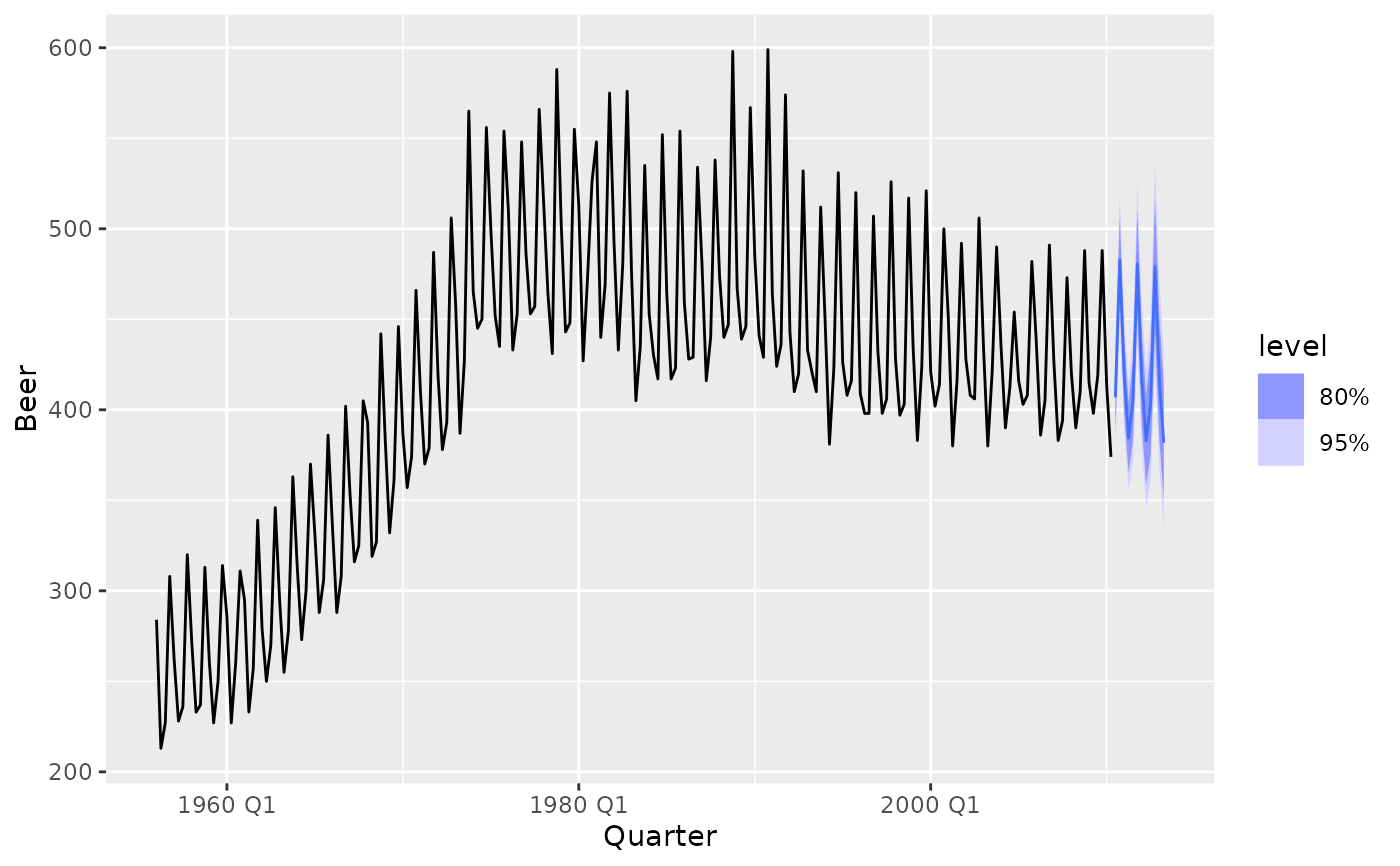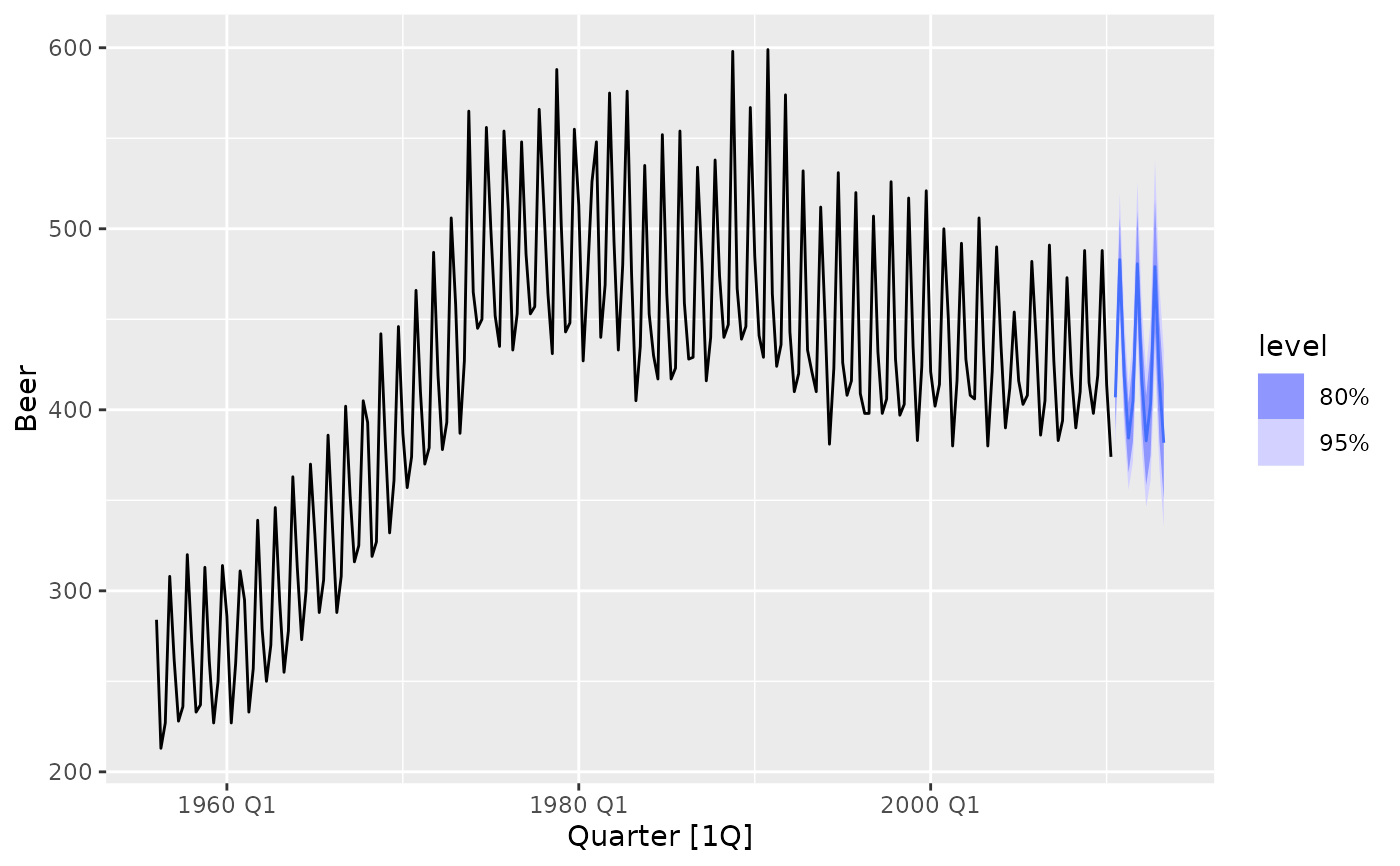Produces a forecast plot from a fable. As the original data is not included
in the fable object, it will need to be specified via the data argument.
The data argument can be used to specify a shorter period of data, which is
useful to focus on the more recent observations.
Arguments
- object
A fable.
- data
A tsibble with the same key structure as the fable.
- level
The confidence level(s) for the plotted intervals.
- show_gap
Setting this to
FALSEwill connect the most recent value indatawith the forecasts.- ...
Further arguments passed used to specify fixed aesthetics for the forecasts such as
colour = "red"orlinewidth = 3.- point_forecast
The point forecast measure to be displayed in the plot.

